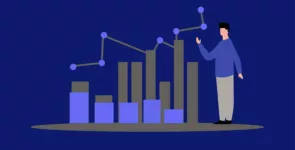Algorithmic trading — also called automated trading, black-box trading, quantitative trading, or algo-trading — involves high-risk speculative investment tactics where computer-executed transactions follow predefined algorithms. Its core concept revolves around analysing market patterns to forecast price fluctuations within a chosen yield curve, ideally aiming for increasing yields. Many firms that provide bespoke web development services are also leveraging these algorithms to build custom trading platforms, enhancing both functionality and user experience for their clients.
In theory, trading algorithms promise to eliminate human error and offer investors enhanced chances to optimise profits. In practice, though, achieving these goals may not always be seamless. Nonetheless, implementing these algorithms is straightforward and qualifies as a low-maintenance trading option. To bolster trading success rates, backtesting algorithms using historical and real-time data can ascertain the viability of a trading strategy.
Who Uses Algorithmic Trading?
A wide range of participants in the exchange market utilises algorithmic trading, including institutional traders like investment banks, investment funds, pension funds, hedge funds, and mutual funds, as well as retail traders and amateur private investors. These participants can develop and employ their own trading robots for automated trading or utilise robots created by third-party developers or companies.
Recent reports indicate that trading robots handle approximately 70–80 per cent of overall trading volume, raising concerns about incidents such as flash crashes, as seen in the October 2016 flash crash. To monitor market conditions and enhance risk management, forward testing is essential. This involves simulating trading accurately through “paper trading”, providing insight into how a trading strategy might perform in the real market and increasing confidence in the chosen plan.
What is Being Automated?
Algorithmic robots’ ability to automatically execute trades based on predefined entry and exit rules, along with other specified criteria on trading platforms, justifies their prevalence. While platforms like MetaTrader, Wealth-Lab, TsLab, and Backtrader showcase this ubiquity, it’s important not to assume that automation in exchange trading is limited to trading robots alone. In reality, automated systems tackle various functions effectively:
- Screening: They aid in selecting assets for trading or investment, considering fundamental or seasonal factors.
- Portfolio and Position Management: These systems handle tasks such as rebalancing and risk management.
- Market Monitoring: They track market conditions and automatically open or close positions accordingly.
- Arbitrage Strategies: Automated systems identify inefficiencies in correlated assets.
Developing an automated trading strategy involves the following typical stages:
- Research Phase: Identifying market patterns conducive to profit-making
- Development and Testing Phase: The trading algorithm is implemented and subjected to backtesting
- Validation Phase: Trading is simulated on a real exchange, known as forward testing, to validate the strategy
- Operation Phase: The trading strategy is launched on a real account to commence live trading
A Trading Robot Usually Consists of the Following Modules
While popular trading robots like TradeMiner, Forex Diamond, FX Pattern Pro, and FX-Agency Advisor vary in their specific features, they typically consist of the following modules:
Trading Platform: This module serves as the backbone of the robot, offering a ready-made or customisable solution equipped with components for receiving quotes, placing orders, basic indicators, report generation, statistical calculations, and visualisation. Examples include MetaTrader, Wealth-Lab, and similar platforms.
Broker Connector Module: Integral to the trading platform, this module allows the trading algorithm to interact with a chosen broker or exchange intermediary, enabling seamless execution of trades.
Trading Strategy: At the core of the robot lies the trading strategy module, which encompasses a specific algorithm governing asset buying and selling based on predefined rules and codes. It also incorporates individual money management and risk management criteria.
Features of Successful Algorithmic Trading
Successful algorithmic trading requires a thorough understanding of the complexities involved, as evidenced by the remarkable returns some trading robots achieve. However, many investors are drawn to replicate these successes without grasping the intricacies of algorithmic trading. Companies venturing into algorithmic trading must acknowledge the extensive development time and years of research required for success.
Despite the allure of ready-made solutions with proven track records, expecting immediate profits upon purchase is unrealistic. Market dynamics constantly evolve, rendering previously successful algorithms ineffective. Thus, developers must continuously adapt to market changes, investors must swiftly adjust positions or withdraw entirely, and algorithms must undergo revisions to align with new market realities.
Written by Adam Eaton








